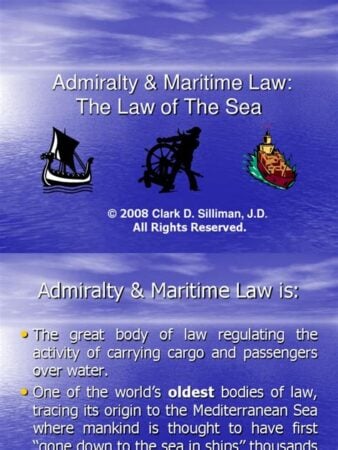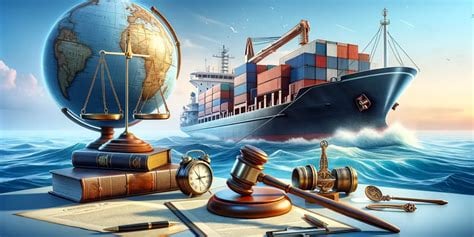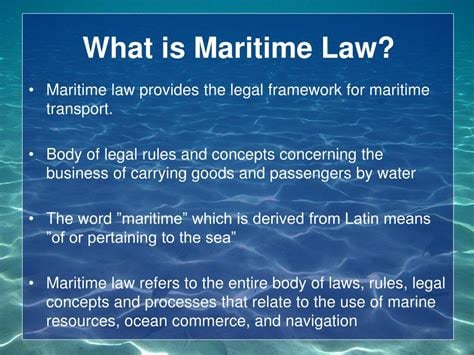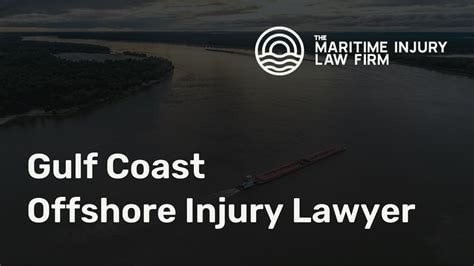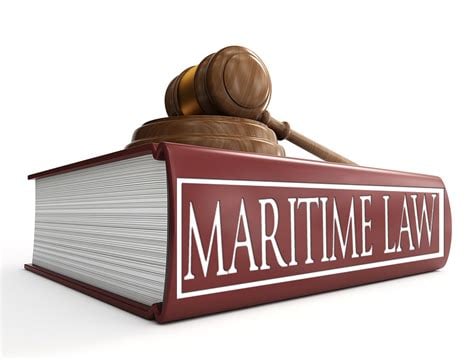
- Introduction
- Historical Foundations
- Key Principles
- Modern Applications
- Table: Key Provisions of the Maritime Law of the Sea
- Conclusion
-
FAQ about Maritime Law of the Sea
- What is the Maritime Law of the Sea?
- What is the role of the United Nations Convention on the Law of the Sea (UNCLOS)?
- What are the territorial waters of a country?
- What is the exclusive economic zone (EEZ) of a country?
- What is the continental shelf of a country?
- What are the rights of passage through straits used for international navigation?
- What is the International Maritime Organization (IMO)?
- What is marine pollution?
- What are the sources of marine pollution?
- What are the environmental consequences of marine pollution?
Introduction
Ahoy there, readers! Welcome to the vast expanse of the maritime world, where the law of the sea governs the conduct of nations and individuals upon the high seas. In this article, we embark on a deep dive into the intricacies of maritime law, exploring its historical foundations, key principles, and modern applications. Get ready to set sail on a journey of legal discovery!
The maritime law of the sea has evolved over centuries, shaped by the interplay of international agreements, national laws, and customary practices. It encompasses a wide range of issues, including territorial waters, navigation rights, environmental protection, and the exploitation of marine resources. As global trade and maritime activities continue to expand, understanding the maritime law of the sea is crucial for safeguarding both human lives and the health of our oceans.
Historical Foundations
The roots of maritime law can be traced back to ancient civilizations, such as the Phoenicians, Greeks, and Romans. These early seafaring nations developed rules and customs to regulate navigation, trade, and warfare at sea. With the rise of maritime trade in the Middle Ages, the need for a more comprehensive and unified legal framework became apparent.
One of the most influential works in the development of maritime law was the "Consolato del Mare," a collection of maritime laws compiled in Barcelona in the 14th century. This document established principles for ship ownership, contracts, insurance, and admiralty jurisdiction. It served as a model for subsequent maritime codes and influenced the development of international maritime law.
Key Principles
Freedom of the Seas: The maritime law of the sea upholds the principle of freedom of navigation on the high seas. This means that all nations have the right to navigate freely through international waters without hindrance from other states.
Innocent Passage: Coastal states have the right to regulate innocent passage through their territorial waters. Innocent passage is the right of ships to navigate through another state’s territorial waters for the purpose of traversing the sea, without engaging in any activities that could prejudice the security or peace of the coastal state.
Territorial Sea and Contiguous Zone: The territorial sea is the area of the sea adjacent to a state’s coast, over which the state has full sovereignty. The contiguous zone is the area beyond the territorial sea, where a state has the right to exercise limited jurisdiction for certain purposes, such as customs, immigration, and environmental protection.
Modern Applications
Environmental Protection: Maritime law plays a vital role in protecting the marine environment from pollution, overfishing, and other threats. International agreements, such as the United Nations Convention on the Law of the Sea (UNCLOS), establish standards for preventing and mitigating marine pollution, conserving fish stocks, and protecting marine biodiversity.
Exploitation of Marine Resources: The maritime law of the sea governs the exploration and exploitation of marine resources, such as oil, gas, and minerals. Coastal states have exclusive rights to the marine resources within their territorial waters and continental shelves. However, beyond these areas, resources are considered part of the "common heritage of mankind," and their exploitation is subject to international agreements and regulations.
Dispute Resolution: Disputes over maritime boundaries, navigational rights, and other maritime issues are often resolved through peaceful means, such as negotiation, mediation, and arbitration. International tribunals, such as the International Court of Justice (ICJ) and the International Tribunal for the Law of the Sea (ITLOS), play a crucial role in settling maritime disputes.
Table: Key Provisions of the Maritime Law of the Sea
| Provision | Description |
|---|---|
| Freedom of Navigation | All nations have the right to navigate freely through international waters. |
| Innocent Passage | Coastal states have the right to regulate innocent passage through their territorial waters. |
| Territorial Sea | The area of the sea adjacent to a state’s coast, over which the state has full sovereignty. |
| Contiguous Zone | The area beyond the territorial sea, where a state has the right to exercise limited jurisdiction for certain purposes. |
| Exclusive Economic Zone (EEZ) | The area of the sea beyond the territorial sea, where a state has exclusive rights to explore and exploit marine resources. |
| Continental Shelf | The seabed and subsoil of the submarine areas adjacent to a state’s coastline, over which the state has exclusive rights to explore and exploit mineral resources. |
Conclusion
The maritime law of the sea is a complex and ever-evolving body of law that governs the conduct of nations and individuals upon the high seas. From its historical foundations to its modern applications, the maritime law of the sea plays a vital role in safeguarding human lives, protecting the marine environment, and ensuring the sustainable use of marine resources.
By understanding the key principles and provisions of the maritime law of the sea, you can navigate the vast expanse of the marine world with confidence and knowledge. So, hoist the sails and embark on your own legal adventure!
To further explore the fascinating world of maritime law, why not check out our other articles:
- [Maritime Contracts: A Guide to Charterparties and Bills of Lading](link to article)
- [Admiralty and Maritime Jurisdiction: Navigating the Legal Waters](link to article)
- [Maritime Insurance: Protecting Your Assets on the High Seas](link to article)
FAQ about Maritime Law of the Sea
What is the Maritime Law of the Sea?
The Maritime Law of the Sea is the body of international law and international agreements that guide the rights and uses of the world’s oceans.
What is the role of the United Nations Convention on the Law of the Sea (UNCLOS)?
UNCLOS is the primary international treaty that establishes the framework for the Maritime Law of the Sea. It sets out the rights and responsibilities of states in relation to the use and conservation of the oceans.
What are the territorial waters of a country?
Territorial waters are the waters extending from the coastline of a country for a distance of 12 nautical miles (approximately 22 kilometers).
What is the exclusive economic zone (EEZ) of a country?
The EEZ is the maritime zone extending from the baseline of a country’s territorial waters for a distance of 200 nautical miles (approximately 370 kilometers). Within the EEZ, the country has the exclusive right to explore, exploit, and conserve natural resources.
What is the continental shelf of a country?
The continental shelf is the submerged extension of the landmass that surrounds a country. It may extend for a distance of up to 350 nautical miles (approximately 650 kilometers) from the baseline of the territorial waters.
What are the rights of passage through straits used for international navigation?
International straits are natural or man-made channels that connect two bodies of water and are used by ships of all states for international navigation. States have the right to pass through straits in accordance with the UNCLOS, regardless of their size or coastal length.
What is the International Maritime Organization (IMO)?
The IMO is the United Nations agency responsible for regulating international shipping. It develops and enforces standards for ship safety, pollution prevention, and other matters related to maritime transport.
What is marine pollution?
Marine pollution refers to the introduction of harmful substances into the marine environment, which can have negative effects on the health of marine ecosystems and human health.
What are the sources of marine pollution?
Marine pollution can come from a variety of sources, including land-based activities (such as sewage and industrial wastewater), shipping operations (such as oil spills and exhaust emissions), and offshore oil and gas production.
What are the environmental consequences of marine pollution?
Marine pollution can damage marine ecosystems, poison marine life, and reduce biodiversity. It can also pose risks to human health, as pollutants can accumulate in seafood and be ingested by humans.
